Host: Bob Baker
Bert von Stuelpnagel & Bryan Hooper will compare and contrast the health systems of Germany and the UK.
Host: Bob Baker
Bert von Stuelpnagel & Bryan Hooper will compare and contrast the health systems of Germany and the UK.
 UNSINKABLE
UNSINKABLEThe captivating story of a World War II destroyer that saw plenty of action.
While conducting research on the Plunkett, which was “all over the place, intersecting with the greatest events and personages of the war,” Sullivan discovered that several crew members were still alive, so he interviewed nonagenarian veterans, as well as their children and grandchildren, in addition to his diligent combing of archives, journals, and ship’s logs. The result is a vivid portrait of the sailors, wives, girlfriends, and families and their world, in which the Plunkett’s battles often seem like interludes. As is typical in war, tedium was the norm, excitement came at rare intervals, and one horrendous incident ensured the ship’s place in history. Launched in 1940, the Plunkett was one of 514 destroyers that fought WWII; 71 were lost, the most of any ship. Even before war broke out, the Plunkett escorted convoys to Britain across the North Atlantic. In November 1942, it accompanied a massive fleet and army that crossed to North Africa during Operation Torch. In July 1943, the Allies invaded Sicily, and the Luftwaffe sank many Allied ships—but not the Plunkett, which also narrowly escaped damage during the invasion of the Italian mainland at Salerno. Matters changed on Jan. 24, 1944 in the sea off Anzio, where a swarm of attackers seemed to target the Plunkett. Countless bombs missed, but one struck, causing terrible damage and killing 53 men. Sullivan delivers a gripping account of what followed as the men fought the fires, rescued survivors, retrieved bodies and body parts, and limped into harbor. After three months of repairs in the U.S., the ship returned to Europe to serve again. Sullivan has done his homework, and readers will enjoy his generous digressions into biography, courtship, shore-leave horseplay, shipboard politics, and a postwar summary.
An outstanding addition to the still-active genre of WWII histories focusing on a single unit, ship, or bomber.
“HIKING” ROWAYTON
FRIDAY JANUARY 15, 2021
9:00 AM
MEET AT ROWAYTON MARKET*
Please join us for a three mile tour of the village of Rowayton.
We will start out from the Rowayton Market at 9:00 AM and hike around most of the perimeter of Rowayton. Lot’s of water views and interesting architecture and history. While there will be some modest hills, for the most part the hike will be relatively flat over paved surfaces. It can be windy so layer up!
Guests and dogs on a leash are welcome. Should be fun!
*THERE IS PLENTY OF PARKING IN THE LOTS ACROSS THE STREET FROM THE MARKET
Contacts:
Dave McCollum and Bob Plunkett
HIKING ROWAYTON
JANUARY 15, 2021
Led by David McCollum and Bob Plunkett, a hearty group of 20 including
several guests participated in a walking tour of the coastal village of
Rowayton on a cool and windy Friday morning.
Our route started at the Rowayton Market and proceeded south along
Rowayton Avenue to the end and then around Pine Point and Nearwater
Lane to South Beach. DMA member Peter Tombros, a Bell Island resident,
joined us to get us access to the Rocky Point promontory surrounded on
three sides by the Sound. Normally a great place to see Manhattan, but the
misty weather blocked our view.
After a windy and cold stop for sightseeing,, we walked the length of Bell
Island over the stone bridge to the Rowayton Yacht Club. At that point, we
split into two groups, one taking the Sammis Street shortcut back to the
Market, and the remainder continued up Bluff Avenue and then down
Wilson back to the Market. About one and three quarters hours for the
longer walk.
A good start to what we hope is a series of winter walks over local venues.
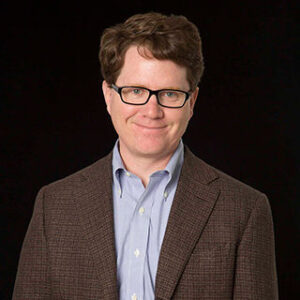
The Metropolitan Museum of Art possesses the finest, most comprehensive collection of Medieval and Byzantine art in the western hemisphere. It is held in two locations: the galleries of the Met’s main building on 5th Avenue and The Met Cloisters in Fort Tryon Park. John D. Rockefeller, Jr. (1874-1960) provided funds that enabled The Metropolitan Museum of Art to purchase the Cloisters museum and its collections from George Grey Barnard in 1925. Dr. C. Griffith Mann will discuss the role played by Rockefeller in the development of the Cloisters.
Dr. Mann was appointed The Metropolitan Museum of Art’s Michel David-Weill Curator in Charge of the Department of Medieval Art and the Met Cloisters in September, 2013. In this role, he is responsible for the medieval collections and curatorial staff in the Met’s main building, and for directing the staff and operations of the Met Cloisters, the branch of the Metropolitan Museum dedicated to the art and architecture of medieval Europe. Dr. Mann received his B.A. in art history and history from Williams College, and his Ph.D. in medieval art from The Johns Hopkins University. A specialist in the arts of late medieval Italy, he has published on civic patronage, painting, and devotion in Tuscany. As a curator, Dr. Mann has worked on exhibitions on the medieval cult of relics, the art and archaeology of medieval Novgorod, and French manuscript illumination of the 13th century. He formerly served as the Chief Curator and Deputy Director at The Cleveland Museum of Art, where he helped to lead the museum’s reinstallation, acquisition, and exhibition programs, and as medieval curator and Director of the Curatorial Division at The Walters Art Museum, where he worked on exhibitions and the permanent collection.
Arranged by Bryan Hooper
Bryan’s notes on the talk:
Dr. C. Griffith Mann spoke to the DMA for the third time in the past twelve months about the history of the Met Cloisters museum in Manhattan, concentrating his narrative on the role played by John D. Rockefeller, Jr. in the development of the museum.
The medieval art at the Metropolitan Museum of Art was initially gifted mainly by J.P. Morgan, and The Cloister’s collection was established by sculptor George Grey Barnard, a friend of Rodin, on a property in Manhattan overlooking the Hudson. Barnard was introduced to Rockefeller by William Bosworth, an architect who had designed a house for Rockefeller’s father and had commissioned Barnard to design some sculptured pieces for the grounds. Barnard, eternally in debt, sold his collection of European architectural artefacts to John D. Rockefeller, Jr., and the collection was donated to the Met in 1925. Rockefeller was involved in a wide range of philanthropic ventures, having become president of the Rockefeller Foundation in 1913, and in 1930 he offered to donate and develop land at Fort Tryon to house the collection. Bosworth hired architect Charles Collens in 1933 to design the Cloisters buildings and a four acre park on the land surrounding it. Development commenced in 1935, and the grand opening was in May 1938. The influence of Rockefeller persists to this day, as the endowment created by the foundation for the museum enabled the Cloisters to manage and survive the financial problems created by the Covid virus.
Griff Mann’s presentation contains illustrations of some of the beautiful objects housed in the Cloisters collection, including parts of the seven Unicorn Tapestries: be prepared for a future talk highlighting that famous collection. See the video at: https://youtu.be/NXigtpSYDAg.
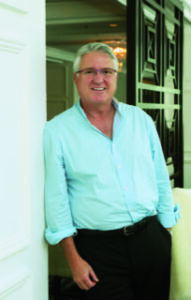 Tim Love is former Vice-Chairman of Omnicom Group, a leading global advertising and marketing services company. He is a James Webb Young Fellow with a Masters in Communication from the University of Illinois, and has a Bachelor of Science in Business Administration with a minor in Fine Arts from Miami University in Ohio.
Tim Love is former Vice-Chairman of Omnicom Group, a leading global advertising and marketing services company. He is a James Webb Young Fellow with a Masters in Communication from the University of Illinois, and has a Bachelor of Science in Business Administration with a minor in Fine Arts from Miami University in Ohio.
He retired in 2013 as CEO of the Asia Pacific, India, Middle East and Africa regions. During his 42-year career in the advertising industry Tim earned his brand-building credentials on some of the world’s largest and most successful brands, including P&G, PepsiCo and Johnson & Johnson.
Following his retirement, Tim taught an MBA elective on “Global Branding and Communication” at Oxford’s Said School of Business. In addition to Oxford, he has lectured at the Lee Kuan Yew School of Public Policy in Singapore, Harvard, Yale School of Management, Columbia University, the University of Illinois, Miami University in Ohio, Northeastern, Savannah College of Art and Design, Mudra Institute of Communications in India and Ave Maria University.
Until 2017 he was on the faculty of the US Marketing Communications College, a pro-bono initiative at the Foreign Service Institute of the US State Department. He is currently Chairman of the Board of Advisors of BoomAgers, a marketing communications agency focused on the +50 year-old generation. He is also an advisor to Amsety, makers of the first nutrition bar that supports liver health.
His 2016 book “The Book That Gets Better With Age” has won six literary awards in the category of “health & aging” and is available on Amazon.com.
Arranged by John Bassler
Bryan Hooper’s notes on the talk:
Tim Love shared with us his views developed over a long career in the advertising industry about the ways we are being brainwashed into polarized beliefs that endanger America. He noted initially that the invention of the Gutenberg printing press resulted in opening information to the masses through the dissemination of printed, rather than hand-written manuscripts, leading to a movement that challenged the authority of the Catholic church and led to the Reformation. Tim averred that we are experiencing a modern-day Reformation of beliefs. Following the development of radio as an effective media for transmitting information ranging from news to advertising to propaganda, we have progressed through television and on to social media that enable individuals to create content and pass it along to others. This has further shifted the power of information from authorities to the individuals with whom the new media connects. Additionally, the evolution of artificial intelligence has enabled internet communications platforms to be more responsive to an individual’s previous thought behavior. This in turn has allowed advertising and platforms to provide greater concentrations of information targeted to our prior habits in using the internet, and the subject matter we typically engage in.
However, this technological advancement has also resulted in the establishment of fake news sites which are flourishing in America’s information ecosystem, spreading hard-to-detect false information and stories on the most used platforms. Tim stated that people tend to restrict themselves to trusted, favorite sources to confirm their prior beliefs. In the process, they open themselves to more exposure to colossal false narratives, and repetition leads to acceptance of the falsehoods being asserted. For instance, Pew Research found that 79% of Fox News viewers were said to believe that media exaggerated Covid-19 as a serious health threat – despite the fact that over half a million people in the US have died from it.
His solution is, first, that individuals should take responsibility and check their facts more frequently than currently occurs. Next, he urges that the media industry, their advertisers and the legislators should agree on means to self-regulate content to avoid further escalation of the problem.
Tim’s white paper on the subject is to be found at: Discovering Truth Paper 5_12, and the link to his podcast is: http://www.timlovesworld.com/podcast.html. The link to the video of his talk is: https://youtu.be/2aAxFrw-spw.
 Jim Himes represents Connecticut’s 4th District in the United States House of Representatives where he is serving his seventh term. He serves as the Chair of the National Security, International Development and Monetary Policy Subcommittee of the House Financial Services Committee.
Jim Himes represents Connecticut’s 4th District in the United States House of Representatives where he is serving his seventh term. He serves as the Chair of the National Security, International Development and Monetary Policy Subcommittee of the House Financial Services Committee.
Born in Lima, Peru in 1966 to American parents, he spent the early years of his childhood in Peru and Colombia while his father worked for the Ford Foundation and UNICEF. As an American abroad, Jim grew up fluent in both Spanish and English and was raised with an awareness of the unique position of the United States in the world. At the age of ten, he moved with his mother and sisters to the United States.
Jim graduated from Hopewell Valley Central High School and then attended Harvard University. After completing his undergraduate work, he earned a Rhodes Scholarship and attended Oxford University in England, where he continued his studies of Latin America, including research in El Salvador. He began his professional career at Goldman Sachs & Co. and worked his way up to Vice President over the course of a 12-year career. There he worked extensively in Latin America and headed the bank’s telecommunications technology group.
Prior to his service in Congress, Jim ran the New York City branch of The Enterprise Community Partners, a nonprofit dedicated to addressing the unique challenges of urban poverty. His team led the way in financing the construction of thousands of affordable housing units in the greater New York metropolitan region. Jim’s experience at Enterprise spurred his involvement in politics. Putting his expertise in affordable housing to work, he served as a Commissioner of the Greenwich Housing Authority, ultimately chairing the board and leading it through a much-needed program of reforms. Jim went on to become an elected member of his town’s finance board, setting tax and budget policy for Greenwich. He has also served as Chair of his local Democratic Town Committee, organizing others in the community to become more active in the political process.
Jim lives in Greenwich with his wife Mary (and not frequent enough visits from his daughters Emma and Linley).
Arranged by Bryan Hooper
Bryan’s notes on the talk:
Congressman Jim Himes demonstrated why he is currently serving his seventh term representing Connecticut’s Fourth District in the US House of Representatives, revealing his thoughtfulness, openness to a wide range of viewpoints, and a commitment to fiscal responsibility. He opened his session with a realistic overview of the current political scene, which he described as one of an electorate angry and resentful at the dislocation caused by de-industrialization, and the attendant loss of well-paid manufacturing jobs. This in turn has led to an increasingly polarized society in terms of wealth distribution, with blame assigned to various causes and resulting in an ultra-partisan population. The Congressman made no pretense at omniscience in terms of solutions, but asserted that the Biden administration was on the path to unifying the country by focusing on investment in infrastructure and growing the economy. He answered a diverse range of questions from across the political spectrum and was impressive in his handling of subjects, such as immigration, where the intensity of feeling was apparent from some of the audience. His approach was pragmatic and nuanced, and he stressed that there are no easy answers to most of the problems we face as a nation.
Few of our speakers deal with as many as twelve questioners, and in the video of the session you can view his responses: https://youtu.be/XHiF5ST8MMU.
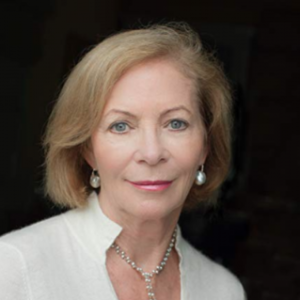 Patricia Walsh Chadwick was born in Cambridge, Massachusetts in 1948. She will speak to us about her upbringing in Cambridge at Saint Benedict Center, which was established in 1940 as a community of devout Catholics committed to fellowship and faith but developed over two decades later into a rigid, sequestered religious sect headed by an excommunicated priest and his cohort, a staunchly Catholic married woman with a puritanical streak. Patricia was one of 39 children raised in this cult and she has written on her experience in Little Sister: A Memoir, a story of indoctrination, fear, suffering, resilience, love and grace. In her presentation she will discuss how she rose above the shame and demons of her past, built a prosperous career in finance and investments, married and raised two wonderful, now adult, children.
Patricia Walsh Chadwick was born in Cambridge, Massachusetts in 1948. She will speak to us about her upbringing in Cambridge at Saint Benedict Center, which was established in 1940 as a community of devout Catholics committed to fellowship and faith but developed over two decades later into a rigid, sequestered religious sect headed by an excommunicated priest and his cohort, a staunchly Catholic married woman with a puritanical streak. Patricia was one of 39 children raised in this cult and she has written on her experience in Little Sister: A Memoir, a story of indoctrination, fear, suffering, resilience, love and grace. In her presentation she will discuss how she rose above the shame and demons of her past, built a prosperous career in finance and investments, married and raised two wonderful, now adult, children.
Patricia received her BA in Economics from Boston University, and began her financial-services career in 1972, worked at the Ford Foundation from 1976 to 1980, then joined Citicorp Investment Management that year. In 1988, the group was sold to USF&G – and re-named Chancellor Capital Management. By 1991, Chancellor was an employee-owned asset-management business, which was acquired by Invesco in 1998. Developing over the years, Ms. Chadwick’s career at Invesco culminated in the management of a $15 billion asset business. She retired at the end of 1999 as a Global Partner of Invesco, and founded Ravengate Partners LLC, a consulting firm dedicated to providing businesses and not-for-profit institutions with education and advice about the financial markets and the global economy. She is currently working on her next book, which covers the financial industry.
Arranged by Bryan Hooper
Bryan’s notes on the talk:
Patricia Chadwick related the story told in her book, Little Sister, a memoir about her life growing up in an isolated religious community in Massachusetts. Saint Benedict Center was established by Catherine Clarke in 1940 as a club for Harvard and Radcliffe catholic students, and Father Leonard Feeley was hired as chaplain in 1943. Feeney was excommunicated by the church in 1948, but in 1949 he then founded a religious order with Clarke, and named it The Slaves of the Immaculate Heart of Mary. Patricia’s parents, married just over a year and with a baby, joined the order together with about 50 others. Initially a gregarious and fun-loving group, in a few years it transformed into a sect with discipline imposed by Clarke and Feeney, including plain clothes, separation of married couples, and name changes – Patricia became Little Sister Anastasia; her father, Brother James Aloysius; her mother, Sister Elizabeth Anne. The community lived in seven houses behind a red fence in Cambridge until 1958 when Clarke decided to move them to a 17.5 acre site in Still River, MA.
Before the move, any child over the age of 3 had already been separated from their parents within the group, and once the move was completed, Sister Catherine decreed that the 39 children could no longer speak to any of the big brothers and sisters (the adults), apart from eight women, designated as “angels,” who were assigned to look after the children. There was no sexual abuse, but Patricia said there was physical punishment meted out using a piece of garden hose. Despite being deprived of traditional adult nurturing, Patricia looks back on her life then with little rancor and much pleasure: the schooling was good, thanks to an outside hire of a competent principal, they had access to a farm and the care of animals, and were all taught to play a musical instrument. As a junior, Patricia was encouraged to apply to and was accepted by Bates and Vassar. The latter action led – as intended by Sister Catherine – to accrediting the sect’s school, and Patricia was then told by Sister Catherine to withdraw her applications. Eventually, on graduating school, she was expelled from the community and forced into an outside world for which she was less than fully prepared due to being banned from access to any media.
How she managed to obtain her first job and develop a subsequent career in the financial industry is described in Little Sister, and her life in finance is to be the topic for an upcoming book. In addition to reading the book, you can learn more about Patricia’s fascinating story by visiting patriciachadwick.com, and see the video of her talk on: https://youtu.be/vFps6lB3PPQ.
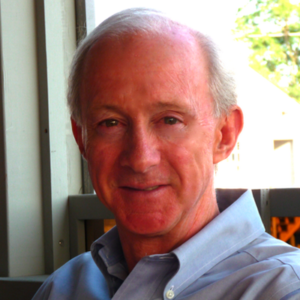
Gunnar Edelstein was born 1949 in Albuquerque, N.M. He graduated from the Wilbraham & Monson Academy, Wilbraham, Mass., in 1968 and received a B.S. degree in biology and chemistry from Ohio Wesleyan University in 1972.
Gunnar joined the U.S. Navy in San Diego, California, and served for seven years as a fighter pilot. In 1979 he joined American Airlines as a flight engineer on Boeing 727s and one year later was laid off and joined Air Products & Chemicals in sales, and also served in the Massachusetts Air National Guard flying A-10 Thunderbolts. In 1984, he rejoined American Airlines as a Boeing 727 copilot and retired from flying in 2011.
Edelstein is now in sales with Prudential Connecticut Realty. He was on the Darien Board of Realtors board for three years and was president in 2011. Gunnar and his wife Sarah live in Darien and have a son, Jeff, 26, who is a U.S. Army combat infantryman.
Gunnar is a member of the Silvermine Golf Club, the Darien Sail & Power Squadron, and the Noroton Yacht Club. He enjoys golf, sailing, paddle tennis and tennis.
Arranged by Gary Banks
Bryan Hooper’s notes on the talk:
Gunnar Edelstein, a DMA member, shared with us his experiences of flying the A-10 Thunderbolt, otherwise known as the Warthog, as a reflection of its less than streamlined appearance. Gunnar graduated in 1972 when the Vietnam war was still being waged and joined the US Navy in San Diego where he was assigned to a carrier group and flew A-4 Skyhawk attack jets. After leaving the Navy in 1979, he joined American Airlines in Dallas for a brief period before being laid off as a result of the second world oil crisis following the Iranian revolution. Gunnar then worked for Air Products and joined the Massachusetts Air National Guard 131st Fighter Squadron flying the A-10.
He noted that the A-10 was originally developed in the 1970s to destroy Russian tanks, and was an aircraft designed essentially around a very powerful Gatling gun firing 30mm depleted uranium shells. In addition to the rotary cannon, the aircraft carries under the wing multiple missiles and bombs, some guided by infra-red, others by a television system, so it is a fearsomely-armed ally for the troops. Since the A-10 is relatively slow at 340 to 400 miles per hour, and therefore vulnerable to ground force attacks, the design of the craft considered the survival of the pilot by enclosing the seat in a 1200 lb. titanium bathtub, providing self-sealing fuel tanks in the event of a strike, flares and chaff to decoy enemy missiles, redundant hydraulic systems, and reinforcing armor. It also has a short take-off distance of 4000 feet making it versatile in terms of operating fields, has an on-station capability of 1.75 hours, and can be re-fueled in flight. The A-10 was used extensively in the first Iraq War, and responsible for destroying over 900 tanks, 2000 vehicles and 1200 artillery pieces.
The mission of the A-10 was essentially close air support for ground troops. Gunnar’s son, Jeff, joined the presentation with a video to illustrate his very personal experiences with the power of the A-10 in that role in real life. Jeff was in the 173rd Airborne Brigade as a paratrooper serving in Afghanistan and pinned down in an extremely dangerous situation by enemy forces in June, 2010. He credited the fast and accurate intervention by A-10 pilots to saving the day – and his life.
Gunnar’s talk, together with his presentation slides and videos, as well as Jeff’s contribution, can be seen at: https://youtu.be/wnJlcKY8k6s.
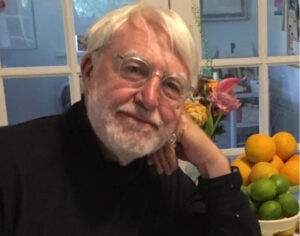
Ric Grefé, until recently the Design Thinker in Residence at Williams College, works at the intersection of business, society and creativity, applying the craft and optimism of human-centered design to the intractable challenges we face today.
Ric is director emeritus of AIGA, the professional association for design, which he led for 20 years. Prior to AIGA he served in naval intelligence in Asia; he was a journalist with AP and Time, and had his own consulting firm in urban design and public policy. He also led legislative strategy and strategic planning for public television and radio in Washington, DC. RIc has an undergraduate degree from Dartmouth and an MBA from Stanford. Currently, he serves as board chair of Britain’s Royal Society of Arts in the US. He is just down-right curious, so it’s hard to list a finite set of interests.
Ric is married to Karen Vogel, who is an artist and landscape designer (and formerly very active in the DCA Greenhouse). Their two grown children both graduated from Darien High School. They have lived in Darien for 25 years.
Arranged by Bryan Hooper
Bryan’s notes on the talk:
Ric Grefé, DMA member, talked about the application of design thinking in encouraging innovation in business strategies. He noted that business moved from being essentially production-driven to a more consumer-oriented approach as the information revolution developed in the 90s, and consequently refocused thinking from mass production to mass customization, concentrating on designing a product that real people want. Techniques for solving problems have been developed in line with this shift towards identifying and supplying products to meet the consumers’ needs. Providing quick answers based on past successes began to give way to slowing down the strategic planning process and involving a broader range of participants with varying experiences to determine more creative outcomes and innovative solutions. This brainstorming approach depends on being human-centered, collaborative, and utilizing divergent thinking, followed by producing prototype solutions, testing and iteration of the process. The novel technique concentrated initially on manufacturing product development, but has grown to being applied to services and organization strategy. Ric cited success in the use of design thinking in fields as varied as the approach to soldiering in Afghanistan to the redesign of ballots and steps in the election process for the Federal Election Commission.
Lack of time prevented Ric from diving deeper into his subject in terms of methodology and detailed examples, but a visit to the Williams College website will put more flesh on the subject. Go to the site listed below and click on the Resources listing at the top of the home page that comes up: williams.edu/designthinking. Additionally, Ric’s talk and slides can be found on our website at: https://youtu.be/7_-twb-6ywo.
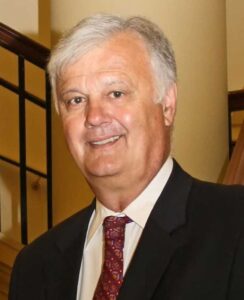
Jeff Bergner is the author of The Vanishing Congress: Reflections on Politics in Washington. He formerly served as chief of staff for Senator Richard Lugar, staff director of the Senate Foreign Relations Committee, and Assistant Secretary of State for Condoleezza Rice. Jeff founded and ran a successful Washington, DC, lobbying/ government relations firm and has served on policy advisory committees for several presidential candidates.
He received his B.A. degree from Carleton College, and M.A. and Ph.D degrees in political philosophy from Princeton University. He has taught at the University of Pennsylvania, Georgetown University, and Christopher Newport University, and currently teaches as an adjunct lecturer in the Batten School of Public Policy at the University of Virginia.
Jeff speaks and writes widely on political issues, and is the author or editor of five previous books and numerous scholarly articles. His opinion pieces have appeared in the Washington Post, the Chicago Tribune and the Wall Street Journal, and his occasional articles for the Virginian-Pilot are circulated nationally by the Tribune Syndicate.
Arranged by Harry McLachlin
Bryan Hooper’s notes on the talk:
Jeff Bergner, spoke to us from Virginia about his experiences working with Congress, and shared his views on how to improve its efficacy. He stated that opinion polls which measure the popularity of various institutions show the current favorable view of Congress now stands at a mere 13%, lower than the majority of other entities polled, although he noted most of us have a much more positive view of our own individual representatives and senators. In examining the reasons for the overall lack of popularity, Jeff identified several areas where Congress has problems operationally: for instance, there were approximately 12,000 bills introduced in the last Congress – the highest in history – and only 2% were enacted. He attributed the large number of bills put forward as driven by individual members’ attempts mainly to demonstrate a position on issues to their constituents, both locally and nationally, to enhance their own reputations. He noted also that Congress has increasingly allowed the executive branch of government to manage many important topics, such as immigration, healthcare, war powers and fiscal matters. In essence, he concludes, Congress is not working as intended. He attributes this not to the lack of talented people who serve – he believes they are in the main high caliber – but rather to the increasing polarization of opinions over this current century. He noted that history indicates that when one party is the majority then gridlock does not occur and action happens, but there have been nine times in the past eleven elections when either the house or the senate or the presidency has changed hands and prevented one party dominating affairs.
The prospects for bipartisanship remain dim. Jeff averred that there are four areas that needed reform to ameliorate the situation.
First, fix the budget process. The budget act of 1974 established procedures to follow to meet deadlines to produce an approved budget on time for the start of the next fiscal year in October. Failure to meet those deadlines is common as the entities involved in each step of the process inevitably cannot resolve differences. In particular, he laid blame on the Authorizing Committees who are meant to establish a basis for operating programs and provide guidance to the Appropriations Committees regarding the appropriate levels of funding for programs. Many draft bills sent to the twelve Appropriations Committees frequently do not receive approval, with the notable exceptions of military budgets and congressional expenditures (no president ever withholds their funds!). The process inevitably ends up with the budget being bundled into continuing resolutions as a series of short-term bills that may need to be re-visited and resurrected every few months.
The excess number of staff involved in Congress, about 10,000 for 535 members, is the second driver of stasis. Staff numbers drive the bills and the process: perhaps 20% fewer might lead to a 20% improvement in results.
The third item he highlighted was the filibuster with respect to pending bills. Jeff made the point that bills can pass the senate on a simple majority, but reaching that point is made difficult by the rules that at least 60 votes are needed to cut off debate, so a filibuster can prevent bills being advanced to the point of even having a debate with amendments considered. Jeff argued that the filibuster should be changed so that only a simple majority vote should be required on a motion to proceed to consideration of a bill.
Finally, he noted that, consistent with his views, the filibuster rules have been amended by both sides for nominees required to be confirmed by the Senate, including nominations for Supreme Court justices, allowing nominations to proceed to closure upon a majority vote.
Jeff’s talk and the resultant interesting series of questions can be viewed by clicking on the following link: https://youtu.be/hiQwUSOJLBE.

Ken Coe was born in Seoul, Korea, in 1964. He moved to the U.S. when he was eleven, spending his formative years in Southern California. He attended UCLA as an undergraduate, then later, The Wharton School of The University of Pennsylvania, for his graduate degree. He next spent nearly thirty years in investment banking and investment management in New York and Connecticut. In 1989, he caught the “travel bug” to Africa, and he has been to the continent on no fewer than 38 occasions (spanning 12 countries). He has been involved with The Nature Conservancy, serving as a trustee for its Africa Program. An avid photographer and naturalist, he is in the process of working on a few different book and internet projects focused on his experience in Africa. Ken lives with his wife Karla in Darien and has two young adult children who are presently living outside of CT.
Arranged by Bryan Hooper
Bryan’s notes on the talk:
DMA member Ken Coe, spoke about conserving wildlife in Africa. He made the point that lions and elephants – the two species we all tend to link to conservation in Africa – can survive in most of the fifteen biomes (ecological communities) in Africa, apart from the Sahara desert, and they both are actually ubiquitous, but dangerous, and need a lot of space. Ken gave the example of a tagged lion, CATaM1, that ranged in Zimbabwe in a circle 125 miles in diameter; he pointed out that there is no national park wider than 50 miles, so to accommodate wildlife there is a need to link up the major wilderness areas to increase accessible space. This has become increasingly difficult over the years because of competition for land from a rapidly growing human population. In 1950 the population of Africa was around 150 million, and it now stands at 1.36 billion, an almost tenfold increase in seventy years.
Ken illustrated his talk with photographs of various animals from several of the biomes to show their diversity, from mountain gorillas in Ethiopia’s Afrotropical area to springboks and meerkat in the Highveld and wildebeest in the Somali-Maasai region, before leading us in more detail through the challenges facing the conservation process.
Historically, conservation was initiated by the descendants of the European colonial powers, and followed through more recently by Americans, and an increasing number of Africans. At first, emphasis was on protecting the animals, and punishing infringements of the law with fines meted out to local populations for breaking the strict rules laid down for the parks: poor people were pushed out of their lands and central authorities took control of the revenue stream emerging from the parks. Inevitably, poverty and desperation resulted in poaching along with resentment of the system. Fortunately, the emphasis has been transformed over recent years to creating partnerships in responsibility with local communities to manage land resources to maintain wilderness areas and share in the wealth created from ecotourism, trophy hunting, forestry and fishing management, as well as limited ranching and game cropping. Ken noted that over the past 20-30 years this approach to managing common-pool resources has been successfully implemented in several countries, including Namibia, Botswana, Kenya and South Africa.
A video of Ken’s presentation can be found at: https://youtu.be/NDtmFdElkGw.
© 2025 Darien Mens Association
Theme by Anders Noren — Up ↑